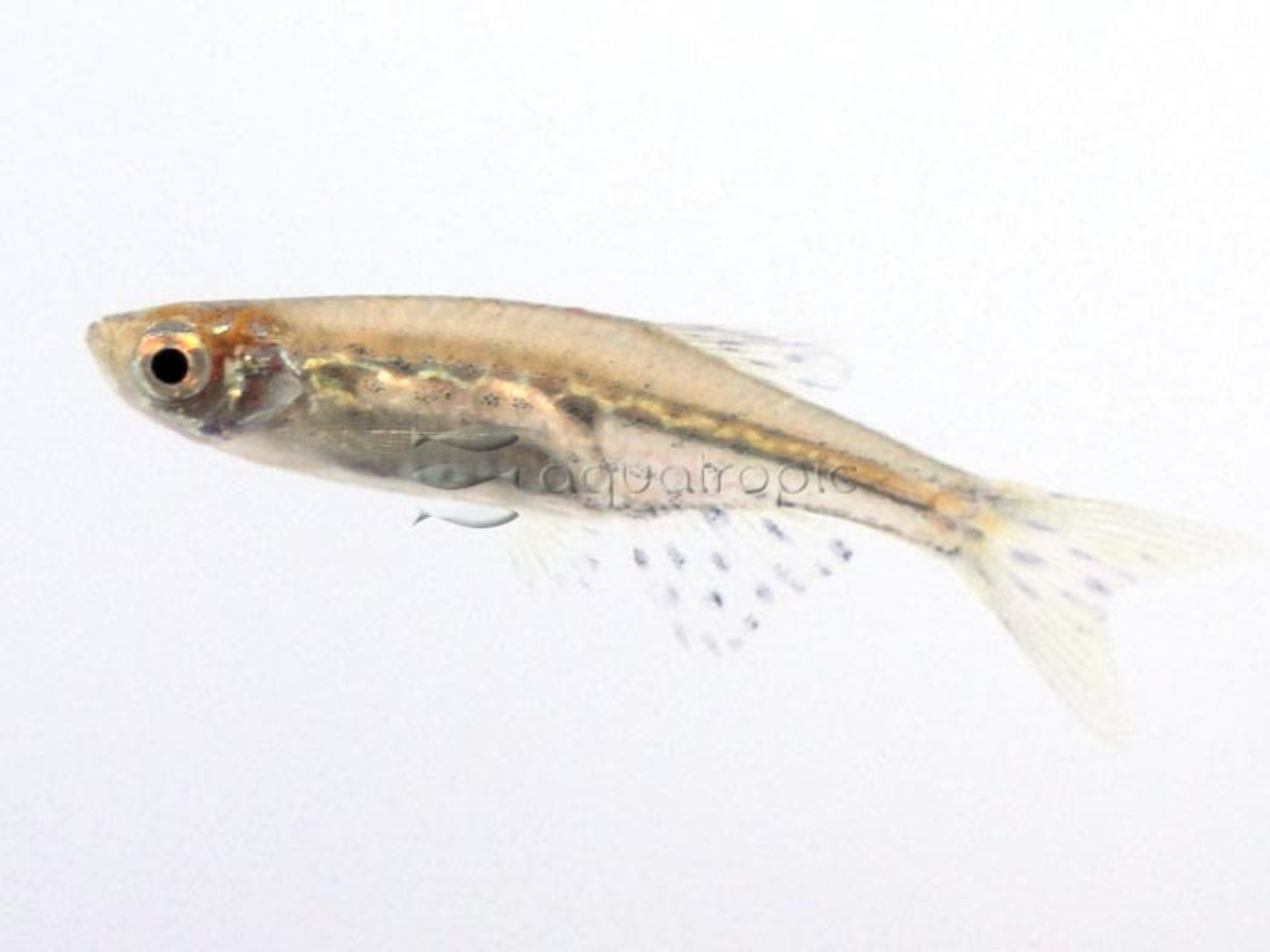Burmese Gold Ring Danio (Danio tinwini)

Myanmar (formerly Burma) is regarded as a center of biodiversity for the genus Danio, with around a dozen species found in the country’s streams and lakes. One of the most exciting discoveries in recent years was the Gold Ring Danio, scientifically described in 2009 as Danio tinwini. This name honors the late U Tin Win of Hein Aquarium Co, a pioneering aquarium exporter in Myanmar who helped popularize this species within the hobby and is responsible for the widespread availability of many others.
Danio tinwini bears a striking resemblance to another member of this group from Myanmar, the beautiful Orange-Finned Danio (D. kyathit). The main difference between these two relates to the fin patterning: striped in D. kyathit, spotted in D. tinwini. Genetic data also puts the Dwarf Spotted Danio (Danio nigrofasciatus), another Myanmar endemic, in this same lineage, as well as the Panther Danio (D. aesculapii).
The Gold Ring Danio is a small, shoaling fish, which grows to only an inch in length, with females a bit fatter in the belly. As with any of the danios, breeding is relatively easy. The eggs are scattered, and the fry can be raised separately from the adults on either live foods or commercial fry powders. The diet of adults is primarily insects larvae and small crustaceans, but dry foods are readily accepted.
Danio tinwini originates from the Irrawaddy River drainage, home to many other aquarium fishes. For an unusual biotope, try mixing this peaceful fish with the tiny Parasphaerichthys gouramis, the equally small Dario hysginon, and the enigmatic Armored Stickleback Indostomus paradoxus.